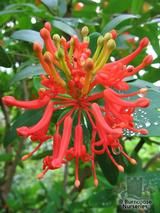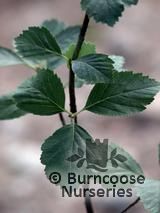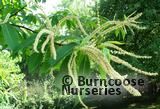Buying Trees
Buying Trees
A tree is defined as a long-lived, woody perennial plant, usually with a single stem.
Things to consider
Size and Height - They can be deciduous or evergreen, range in size from three to three hundred feet, and come in a variety of shapes – rounded, conical, columnar or weeping. Many trees will have a section of bare trunk with branches starting at head height or higher but others, including several ornamental conifers, have a broad base covering a large area of soil. As well as eventual height, you need to consider the spread of a mature tree and whether you will be able to grow other smaller plants under its canopy. A row of trees can be planted and clipped annually to form a hedge but not all trees will cope with this annual reduction and larger-growing ones may need attention more than once a year.
Soil type - Your soil type (light, sandy and free-draining or heavy, sticky clay) will dictate what will thrive. Beech, for example, makes a good hedge but on heavier soils, hornbeam gives a similar effect and will grow better. Whether the soil is acid or alkaline governs whether you will be able to grow such things as halesia (snowdrop tree), some arbutus (strawberry tree) or many of the magnolias. Looking in nearby gardens to see whether your neighbours are successfully growing shrubs such as rhododendrons is the quickest way of guessing which you have (Rhododendrons need an acid soil), but a soil testing kit is a more precise way of determining soil acidity.
Aspect - Some trees need sun and shelter (robinias have brittle branches and will not tolerate a windy position); others such as willows and taxodium (swamp cypress) prefer wet soils. Roots may also cause problems if trees are planted too close to houses or services. In general, the root spread will be the same as that of the branches. Roots can also take a lot of moisture from the soil causing subsidence, another good reason to keep them away from buildings. Others have roots that come to the surface as the tree gets older (flowering cherries for example) making them unsuitable for growing in a small bed in the middle of a lawn.
One way to do your research is visit some Garden Centres and read labels to identify plant sizes and requirements; another is to purchase a small book for reference such as the Hiller Manual of Trees and Shrubs. A visit to an arboretum such as Westonbirt in Gloucestershire or the Hillier Gardens, Romsey, Hants will give a good idea of the size and effect of different trees.
Buying trees online
Buying trees online has advantages and disadvantages. On the negative side, you may not be happy with the quality of what you receive. Try to stick to reputable firms or go with recommendations rather than finding a seller on a site such as EBAY. Not only are you more likely to get a better plant, there should be a customer service department if there is a problem. Also, check out the size of the plant supplied; sometimes a very cheap price only purchases a very small specimen that needs to be grown on before it is ready for planting in the garden. On the plus side, you can probably purchase a range of trees not available in local Garden Centres. Reputable mail order suppliers will only ship plants at suitable times of year for getting them established in your garden and many will hold an order back if you tell them when you would like to receive it.
Trees may be bought bare-rooted (at suitable times of the year) or container grown. Bare-rooted trees will be young and have been grown in a field or similar environment; when dormant, they will be dug up and shipped. The soil they were growing in may be similar to or completely different from your own and the tree may need a period of adjustment before growing away. Container grown trees will probably have been in pots all their life and received the right amount of feed and moisture to grow optimally. But their roots may be congested and not so ready to grow out into garden soil. Larger specimens can be bought (at a higher price) to give instant effect but these may be slower to establish and a smaller plant can overtake it within a few years.
Crocus lists around 90 trees plus 20 suitable for hedging and have a fixed delivery charge of £5.95 regardless of your order size.
Mail Order Trees offer a range of ornamental trees, conifers and hedging.
Top products
These products have been popular with our community. If you are the thorough type, browse and compare all Trees & Hedging from loads of different merchants.
-
Embothrium Lanceolatum
£17.50 at Burncoose -
Sorbus Pseudobakonyensis
£16.00 at Burncoose -
Castanea Dentata
£17.50 at Burncoose -
Acer Negundo 'Variegatum'
£25.00 at Burncoose -
Magnolia 'Brixton Belle'
£55.00 at Burncoose
Read our seasonal guides to lawn care:
Lawn mowers
Electric lawn mowers
Petrol lawn mowers
Ride on lawn mowers
Lawn tractors
Lawn feed
Scarifiers
Aerators
Or browse all our buying guides.
Why shop via the Grows on You Garden Centre?
![]() Buy With Confidence
Buy With Confidence
![]() Find Inspiration
Find Inspiration
![]() The Perfect Product
The Perfect Product







